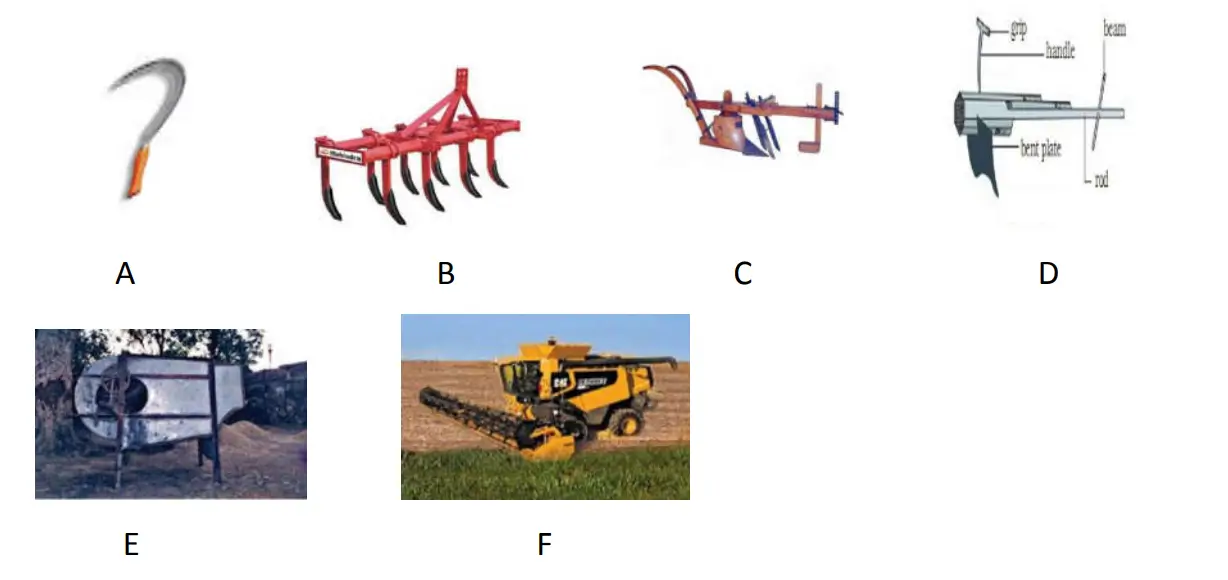SECTION A: Answer in one word or a single sentence.
(Each question carries 1 mark.)
Ques 1: Define a crop. (1m)
Ques 2: List the main cropping seasons. (1m)
Ques 3: What is the purpose of ploughing? (1m)
Ques 4: Mention two crops that require transplantation. (1m)
Ques 5: Why is using a seed drill beneficial for sowing? (1m)
SECTION B: Answer in brief.
(Each question carries 2 marks.)
Ques 6: Arrange the key agricultural practices in order. (2m)
Ques 7: Why is rice cultivation mainly done during the monsoon? (2m)
Ques 8: Describe the steps involved in soil preparation. (2m)
Ques 9: How does ploughing help before planting seeds? (2m)
SECTION C: Answer in detail.
(Each question carries 3 marks.)
Ques 10: Explain transplantation and its benefits. (3m)
Ques 11: Why should seeds be sown at proper distances? (3m)
Ques 12: Describe a method to distinguish between healthy and damaged seeds. (3m)
Ques 13: Identify the following farming tools: A, B, C, D, E, and F. (3m)

ANSWERS
Answer 1: A crop is a plant cultivated on a large scale for food or commercial purposes.
Answer 2: The major cropping seasons are Rabi, Kharif, and Zaid.
Answer 3: Ploughing is the process of loosening and turning the soil to prepare it for sowing.
Answer 4: Two examples of transplanted crops are rice and tomato.
Answer 5: A seed drill ensures uniform seed distribution, maintains proper spacing, and reduces wastage.
Answer 6: The key agricultural practices are: soil preparation, sowing, adding manure and fertilizers, irrigation, weeding, harvesting, and storage.
Answer 7: Rice requires a lot of water, making it suitable for cultivation during the rainy season.
Answer 8: Soil preparation involves ploughing, leveling, and adding manure or fertilizers.
Answer 9: Ploughing loosens the soil, improves aeration, and helps roots penetrate easily.
Answer 10: Transplantation is shifting seedlings from nurseries to the main field; it improves plant health, spacing, and yield.
Answer 11: Proper seed spacing prevents overcrowding, ensuring adequate nutrients and growth space.
Answer 12: The water float test helps separate seeds: healthy seeds sink, while damaged ones float.
Answer 13: (Students must identify farming tools based on images.)







